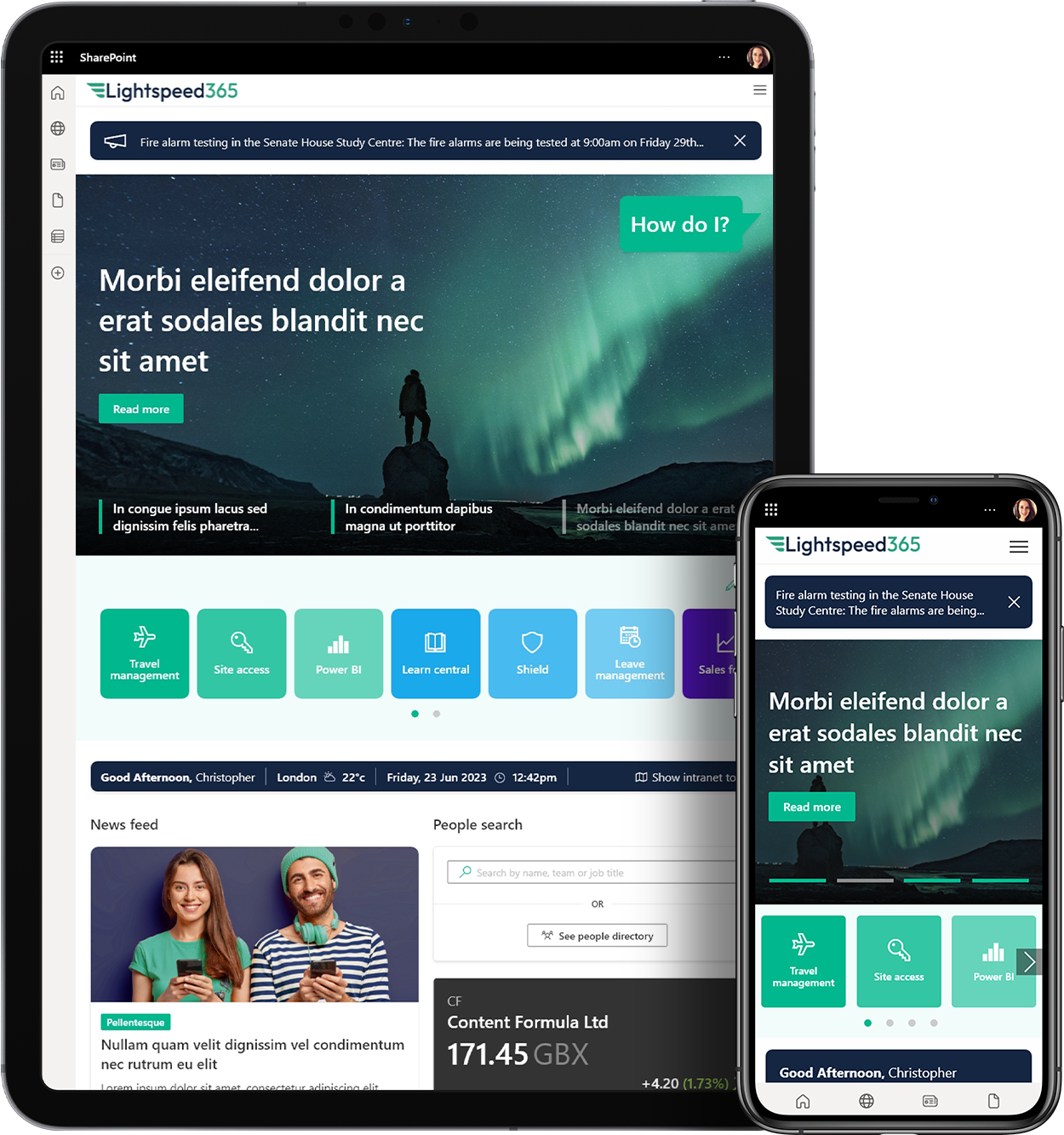How do you launch an intranet and then continue to successfully drive adoption? Its an issue many intranet teams tackle and remains a focus for their efforts. Unfortunately, theres no one simple solution or single ingredient X that delivers good adoption. Instead it requires a range of different tactics and approaches over a sustained period to make an intranet a true success and get everybody using it in ways which drive value.
Part of the effort to drive adoption needs to be change management, often reflected in communications promoting the intranet across different channels. Communicating about the intranet creates awareness but also drives employee buy-in. To drive adoption, employees dont just need to know a new intranet is there, but they also need to understand the why what are the benefits for using it?
Most of our clients have found in that promoting the intranet it is critical to take a top-down approach, highlighting senior management support, but also adopt a bottom-up approach involving endorsement from peers and colleagues. There are many reasons why this dual approach works best, including:
- The use of social tools and intranets is rarely mandatory, and therefore you need to work on influencing the hearts and minds of employees to get them to use the intranet taking a dual approach maximises your chances of doing this.
- Organisations are inherently complex and sometimes highly decentralised, and there can be more allegiance to local divisions or departments than the centre, so endorsement needs to come from central and local sources to be convincing.
- Workforces are very diverse and to make the most sense, communication about the use of the intranet needs to be set in the framework of specific local, functional or team needs.
Lets explore some of these themes in more detail.
Why top-down approaches are critical
Involving senior leaders in your intranet launch and ongoing adoption plan is a must. Having them involved will help you increase intranet awareness as more employees will take notice of a message from your CEO rather than somebody less senior.
Top-down communication also gives the intranet a legitimacy and sets the strategic context for its use. Ideally your CEO is painting the bigger picture by explaining that the intranet is important and showing how it fits into wider organisational goals and strategy. This helps users to understand why the intranet is a must-use channel.
More specifically, communication and endorsement from senior management can also influence the actions of other managers who are tasked to deliver central communications to their teams and beyond. There can be a cascade or trickle-down effect with endorsement of the new intranet. This has most impact if senior leaders lead by example and continue to use the intranet in a highly visible way. Other senior managers, then middle managers and then their teams may follow suit in using the intranet and its constituent tools.
How to deliver top-down communications
Our clients and other organisations have used different tactics to show their leaders support and endorse the new intranet. For example:
- Featuring senior leaders in a high-profile launch video promoting the intranet
- Putting a senior leader behind some more traditional messaging, such as all company email or an announcement on the new intranet itself
- Identifying a member of the C-suite as the owner or the champion of the new intranet
- Getting senior management to announce a new intranet at a town hall or internal conference
- Getting senior leaders to continue to use social tools such as blogs, communities or commenting on content, so they have a visible presence
- Getting the CEO to encourage other senior leaders to also champion the intranet
Why bottom-up communication is also critical
Sometimes endorsement from senior management isnt enough to drive adoption, and a tandem bottom-up approach reflected in peer-to-peer recommendations of intranet use and more local promotion is required.
In larger global companies, in organisations built by acquisition or where processes tend to be decentralised and individual parts of the company operate with some autonomy, there can be some mild resistance to and skepticism about centrally-driven messages and initiatives. This does have the ability to negatively impact adoption for intranets.
There can also be some general skepticism about intranets, for example from employees who experienced a poor intranet at a former place they worked. If youve experienced an intranet which was only used for corporate messaging or was riddled with technical problems, then you may have low expectations and be less than excited about what an intranet can do for you.
Having local endorsement of the intranet from peers can override this. It can dispel any notion that the intranet is not a useful work tool. However, perhaps the most important factor is that when a peer recommends the intranet to a colleague they usually describe it in a way which references local roles, priorities and cultural sensitivities. They also may use the primary language of a local office which means messaging can be more direct and impactful.
While central messaging is important, local or peer recommendation helps employees understand whats in it for them and how the intranet can help them in their everyday role. It also potentially drives additional trust in the relevance of the intranet to them.
How to support bottom-up communications
Weve seen several ways that organisations help support bottom-up communication for intranets, including:
- Organising a champions or advocate network to promote the intranet through different divisions, locations and departments
- Providing resources for local champions to adapt to their own needs to promote the intranet to their peers
- Running train the trainer programmes to help local champions teach others about the intranet
- Focusing on local use cases and communities which will make sense to different parts of the organisation and show a relevant example of good use
- Working together with local management and promoters to co-promote the intranet
Taking the dual approach
There are different ways to launch and promote an intranet, as well as keep up the efforts to drive adoption. And some tactics will work better for some organisations than others.
Whatever you try and do, you need both top-down and bottom-up approaches to do this effectively. The combined forces of leadership endorsement and peer recommendation creates awareness and the right context for its successful use. Then the maximum number of people possible can start to benefit from using your intranet.
The original article was published here



 SharePoint Products
SharePoint Products

